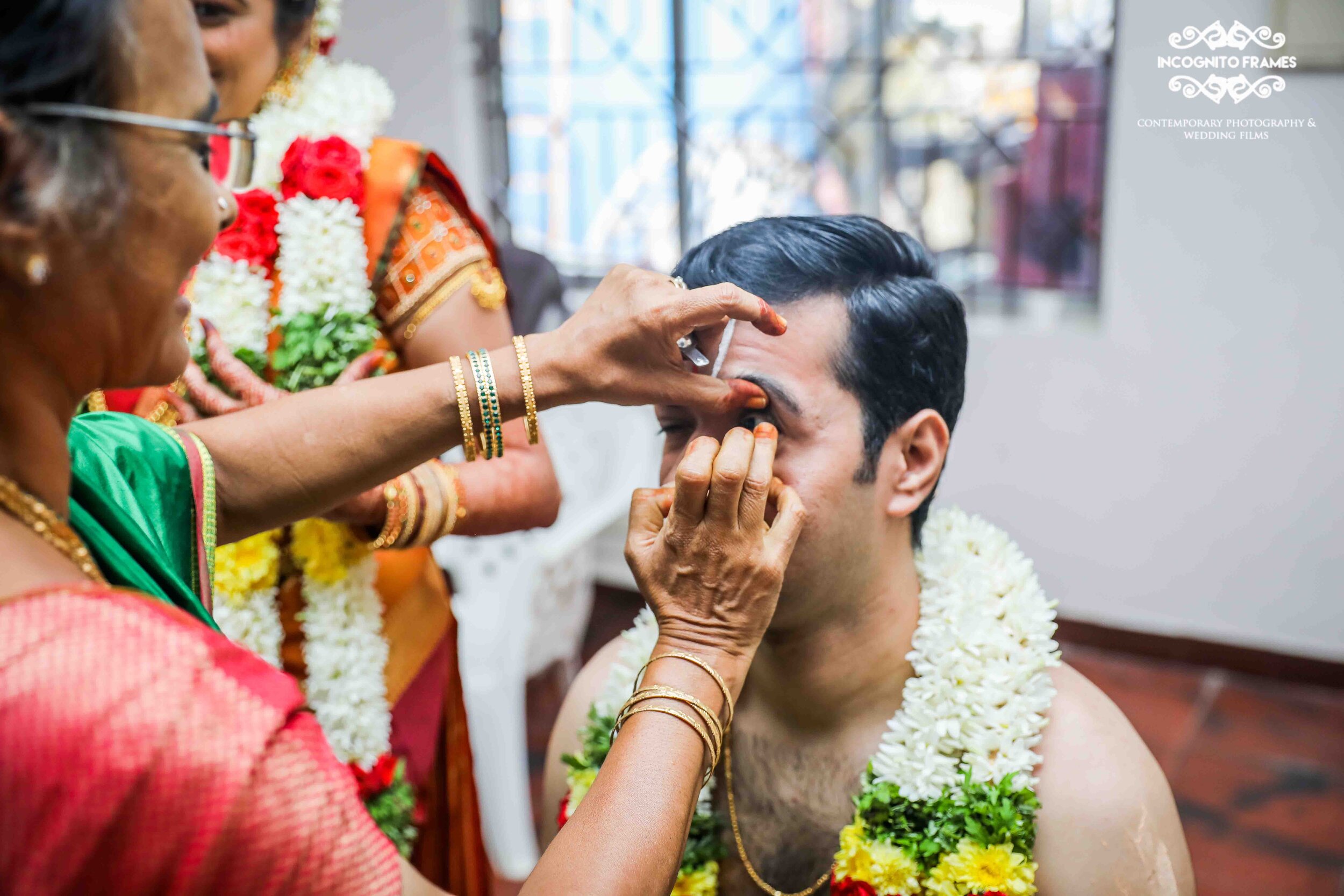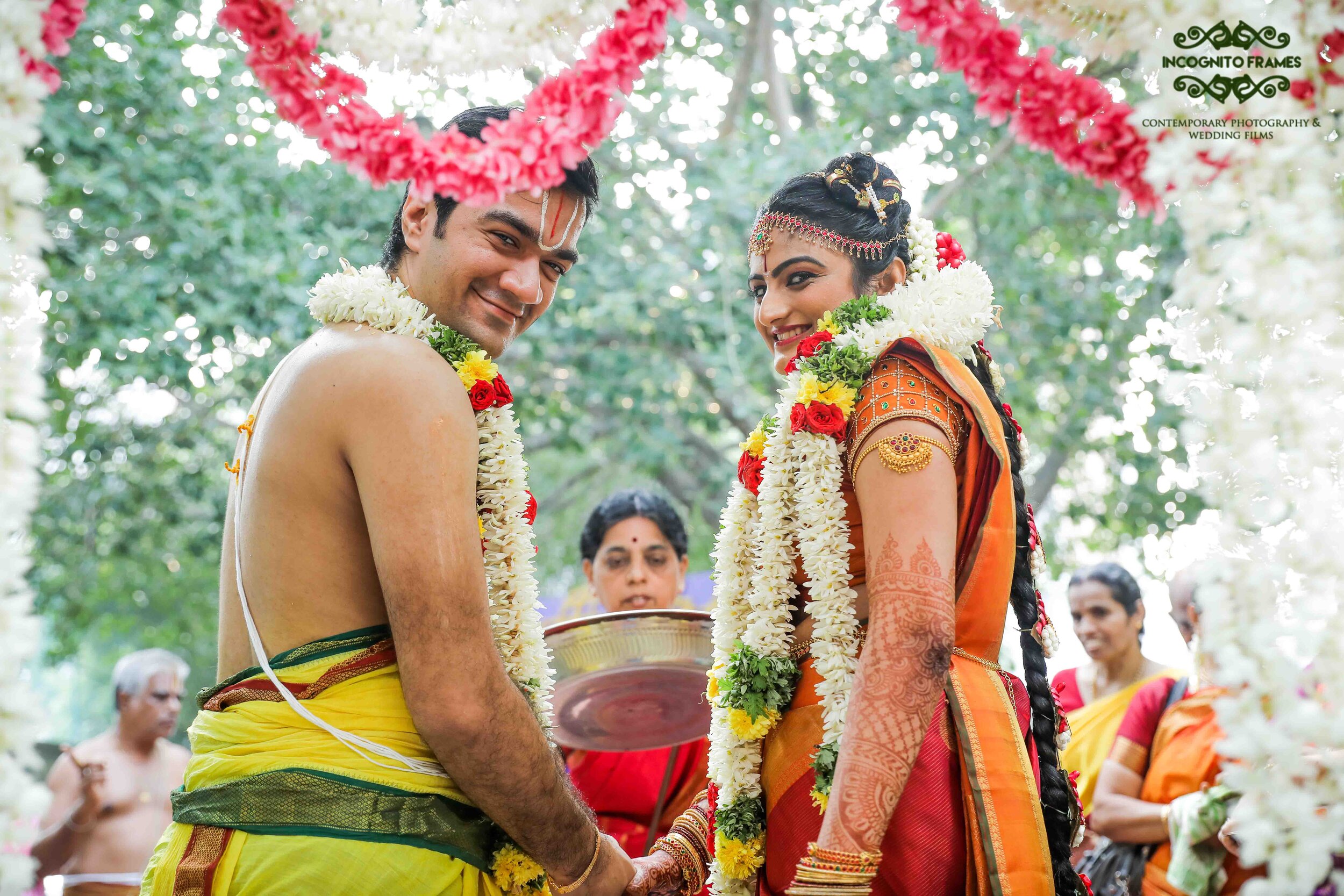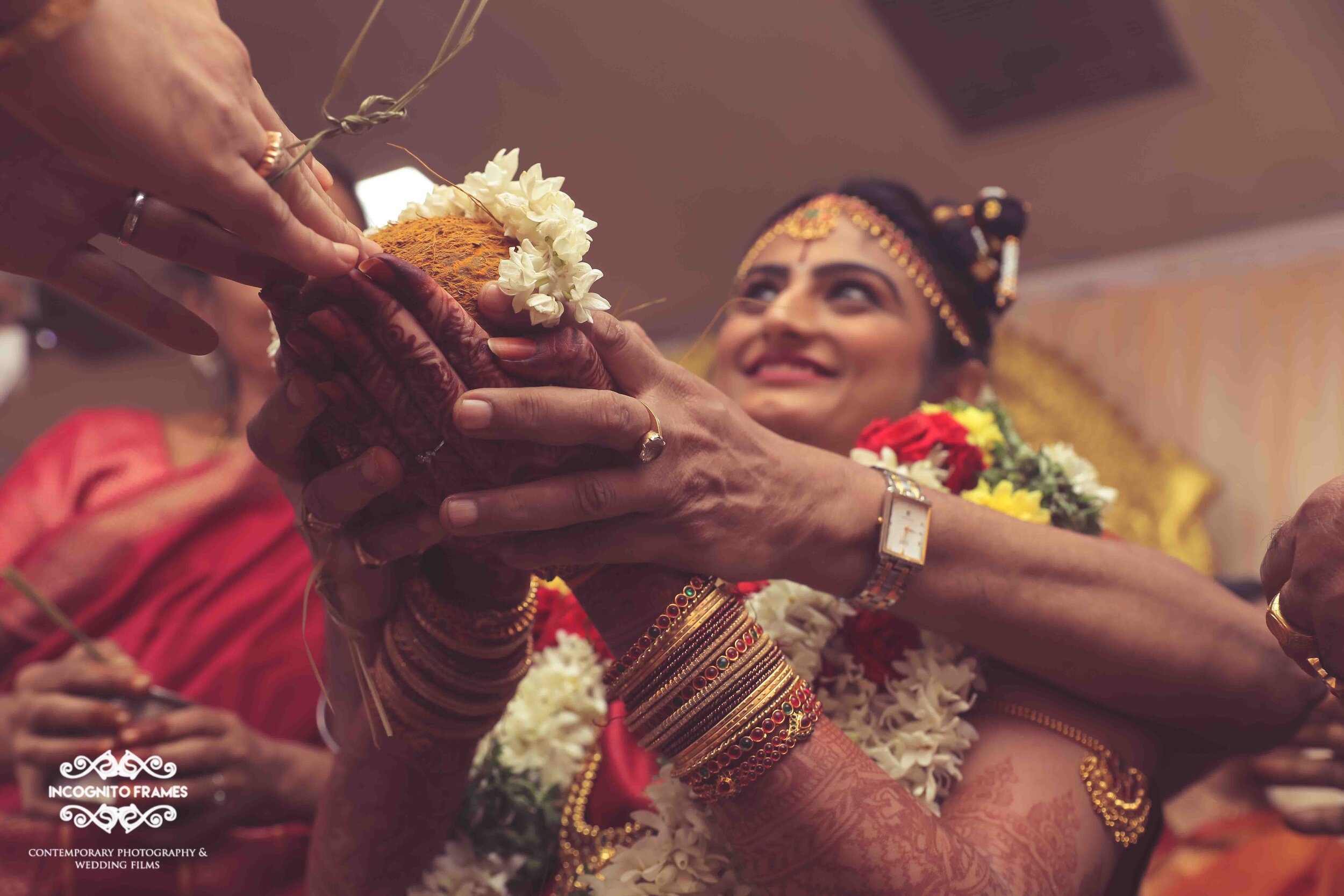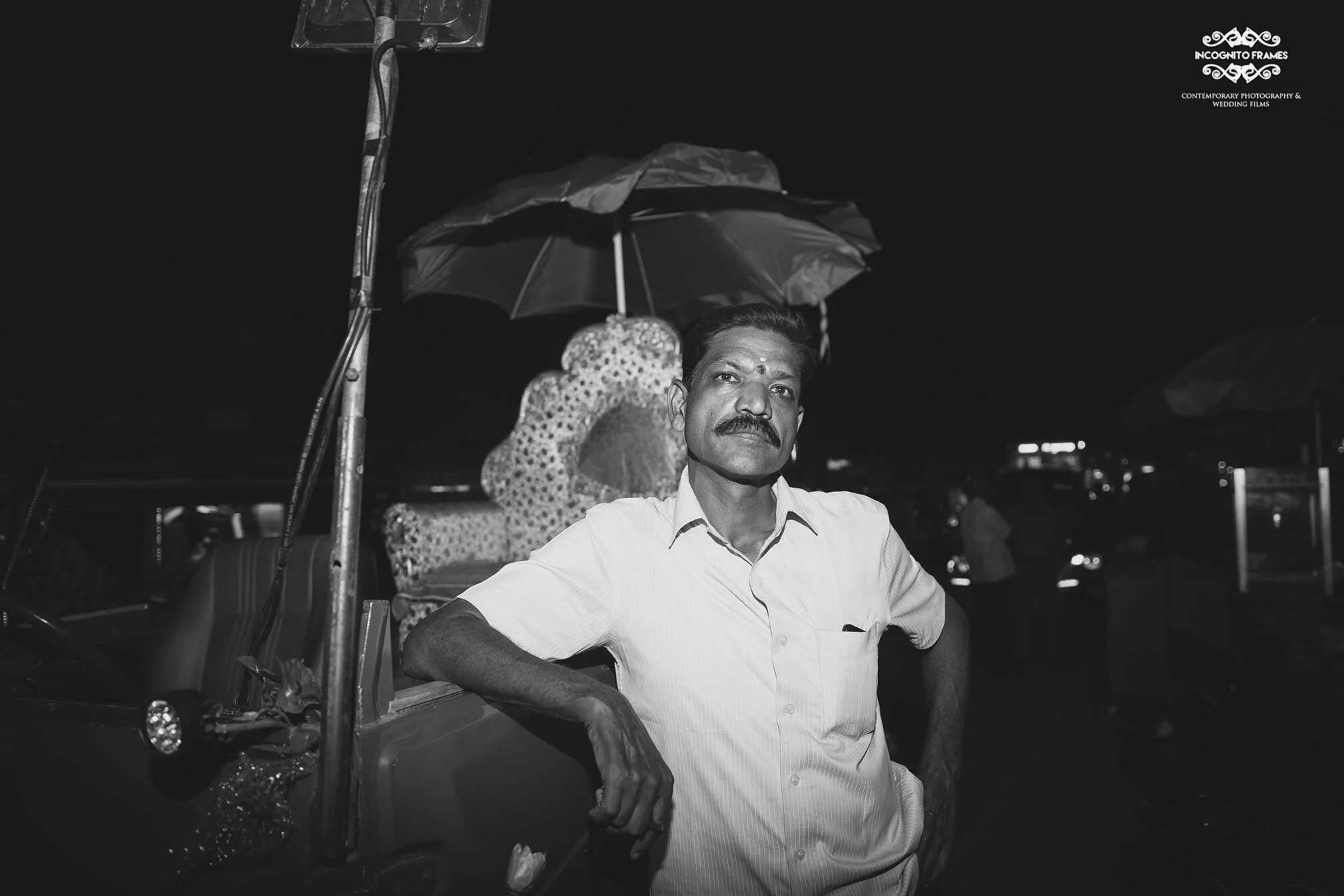Our latest wedding teaser and wedding film for Anil and Varsha
Wedding Teaser
Wedding Film
Our latest wedding teaser and wedding film for Anil and Varsha
Wedding Teaser
Wedding Film
A wedding story on Ajay and Prathyusha’s traditional Tambrahm wedding which we shot last year. Like many other weddings that were held last year, their wedding was also held among a lot of uncertainties since no one would have experienced a wedding that too a traditional, 3 days Brahmin wedding to be such a low-key affair. Even though it was a wedding during the early pandemic stages, there was no shortage of fun and plenty of scope for great candid moments for us to be shot, inspire all the uncertainties the wedding was conducted by following all the Vedic traditions.
The best part of the event was, as per plan, the wedding was held with very, very limited guests, we are grateful to the bride and groom’s family for keeping it a low key affair which might have been a difficult decision to take but a very, very sensible decision.
The full wedding duration was live-streamed on our website for their friends and relatives who coldnt’t make it on the day.
Though this was no the first time we have been broadcasting a wedding this was probably the first time more guests were joining live than the number of guests who were directly attending the wedding in the venue.
For our team, maintaining distance and live streaming all the weddings became a new normal.

And it begins! “Mai” (we have no idea what it is in English) is applied on the groom’s eyes before the rituals begin

Kumarabhohanam, is a quick but heavy meal offered to the groom by the bride’s family before the major ceremony begins. This will be his last meal as a bachelor!

Broadcasting the wedding on the world wide web.

Raining flowers! Kasi Yatrai,

Malai mathudal

Malai mathudal, part 2

A quick photo opportunity towards the end of Oonjal

A close up shot of the Mangalyam.

Tambrham wedding are never shot of rituals, we are not posting all the rituals here to make this photoblog sleek, so here is one where the bride is seated on her dad’s lap and both are offering a coconut during a pre wedding rituals,

The climax, tying the knot!

The bride’s mother couldn’t control her happiness

Well, the picture says it all, mother’s love

Vellayatu, to break the ice.

Grahapravesham! All set for a new beginning

A picture perfect portrait is often something which has real candid moments in it, here the couple is caught unaware as we were setting by the lighting for a quick portrait session in their traditional attire
For more wedding stories checkout our other blogs
Janavasam is a Hindu wedding tradition where the groom is taken for a procession in an open car accompanied by his entire family along with the team nadhaswaram and thavil to a temple near the wedding hall. The main purpose of Janavasam is to introduce the groom to everyone around the town, after getting the blessings from the temple, the groom along with his family is received by the bride and the bride’s family as they entire the wedding hall together. Here we are sharing a series of images shot in the temple town Madurai during a Tamil Brahmin wedding.









A peek into one of the oldest wedding rituals in the world! Tambrahm is nothing but a catchphrase which is commonly used nowadays for Tamil Brahmin. Though there are many colourful and diverse varieties of weddings which happen in India, the Tambrahm weddings have a special touch of emotion, culture and fun. The rudimentary element of a Tambrahm wedding is its music. You can never witness it around any part of the world without the mela thalam which actually has become a major significance for Tambrahm weddings. Some of the best classical musicians are hired who sit in one corner and semi conduct the whole event literally. The Carnatic music is eventually believed to touch the heart and soul of every Tambrahm.


Tamil Brahmin Wedding rituals are one of the oldest followed wedding rituals in the world
The whole mandapam is filled especially with aunties and young girls who are dressed up in bright silk sarees sent or bought from Kancheevaram and of course! the malipoo or Jasmine flower which is tied to their hair completes the picture. The uncles and young guys are dressed up in a typical pattu veshti (dhoti) and a kurta or a shirt. The Brahmins are too dedicated to gold jewelry that you can find none in artificial jewelry. They are dressed in current trendy jewels from top to bottom.

While the crowd gathers, the mamas, atthais and athimbers engage in fanning themselves even though the wedding pyre is away from them. The groom is nicely dressed in pattu veshti which is also called Panchakacham in Sanskrit which is considered as traditional attire and is given a silk shawl. The bride is dressed in layers of pricey silk saree which is also tied in Brahmin style. It is called Madisaar. The main ornaments she wears are odiyanam, nethi chutty, bangles and some elaborate neck jewellery. The wedding rituals lasts for upto 3-5 days and all of them are some beautiful vibrant and colourful customs. It consists of lots of rituals and pre-post wedding ceremonies.


The first and foremost ceremony is the Pandha kaal muhurtham, this is considered as the first wedding ritual in any tamil wedding ceremony. The elders of the family participate in this ritual. They place a long wooden stick outside the house and bring up Banana trees covered with beautiful decorations to indicate that there is a wedding happening in the house. This is also said to be one of the oldest rituals in the Tamil wedding and is being followed by everyone. The elder members of the house bless the bride and groom and seek the blessings of the almighty for a hassle-free wedding.
Vratham is when the bride and groom’s family engage themselves in a fast a day before the wedding praying for the prosperity of their children on their newly married life. A ritual is followed where a clay pot is filled with grains and any married woman from the family is supposed to water the pot and allow it sprout for the day. This is considered as a symbolic ritual as the pot is considered as both the houses, the grains as bride and groom and the sprout indicates the prosperity of the family. During this time the sing traditional folk songs and rejoice. After 2 days the pot is poured into a pond where the fishes feed on the grains.

Janavasam is a very famous ritual which is nowadays performed in most of the Hindu marriages where the bride and groom come in a car which is colourfully decorated with flowers. This ceremony is conducted just before the reception. Now the car is replaced by chariots driven by horse to make it look fancier and splendid. This ritual is mainly done to welcome the groom with an arthi. Even fireworks are also used as a part of celebrating the occasion.


Nichayadhartham is small pre-wedding get together function where the bride seeks blessings of God in the presence of a priest. During this ritual, the groom’s family gifts the beautiful bride with everything she wants like saris, jewellery, flowers etc. Some families showcase these as gifts as a collection and this is considered as a kind of welcoming the bride from groom’s house there is another ceremony for receiving the groom although he has already been welcomed the previous day as well. This is another round of welcoming that will happen on the day of the wedding. The bride’s family welcomes the groom with clothes and a variety of flamboyantly decorated plates which contain fruits, sweets and flowers. The bride’s brother is supposed to apply tilak to the groom’s forehead which is quite similar to the north Indian Tilak ceremony.
On the wedding’s morning, the bride and groom take a divine bath and get ready for the day. The tradition of Kashi Yatra is performed where the groom has to pretend as if he is leaving to Kashi to become sanyasi. But the bride’s father and brother holds and his hand and tries to convince him to not go for sanyasam and get married. After this, the groom is supposed to head to the marriage hall where the bride’s family welcomes him.
The final tradition before the Kanyadan is oonjal. In this ceremony, the bride and groom are made to sit on a wooden swing, where the women in the house sing traditional folk songs and celebrate the sacredness of marriage. The bride and groom are offered banana dipped in a mil as a part of the tradition. This is basically done to cool them down before marriage and make them comfortable.
The last and final ritual is Kanyadan. The bride and groom get into the mandap together to get married. The bride’s father washes the feet of the groom. The bride’s mother applies kajal to the to be son in law as a part of the ritual. During the wedding muhurtham, bride’s father holds her hand and is given to the groom. Then the bride is handed over a traditional 9-yard madisaar saree as a gift from the groom’s side. She is supposed to change to that saree for Kanyadan. Once she has changed to the new saree, the bride is made to sit on her father’s lap. The groom ties the mangal sutra with three knots and they are considered as wedded husband and wife.
Indian weddings are the most colourful and vibrant compared to most of the weddings that happen around the world and there is nothing to beat the vibrance and tradition when it comes to a typical 2 to 3 days Tambram weddings (Tamil Brahmin Wedding, Capturing a tambram wedding in its true essence is always challenging and we consider our selves lucky to have captured a few weddings this year, sharing the best of tambram wedding photography in Chennai and in other parts of South India.
A compilation of Brahmin wedding rituals from Chennai, Trichy and Hosur.

























